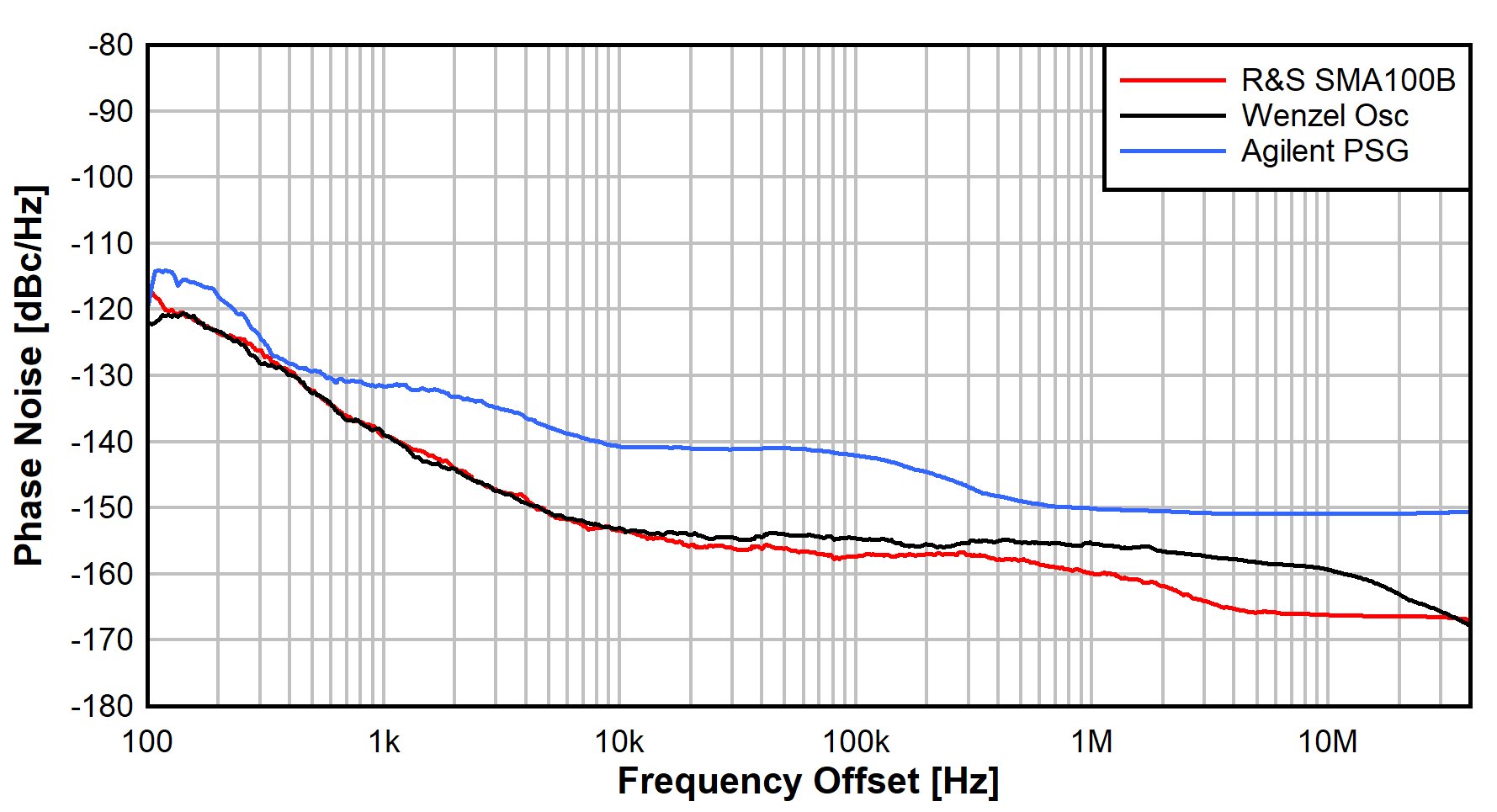SNAA366 October 2022 LMX1204
2 Low-Frequency Reference
The multiplier approach assumes that there is a high-quality, low phase-noise reference signal available. This analysis uses a Wenzel oscillator operating at 491.52 MHz as a good quality, but practical reference source. The performance of the Wenzel is compared against the Rohde & Schwarz SMA100B signal generator. This signal generator is the gold standard of signal synthesis and serves as a gauge of the absolute best performance possible, albeit not practical for use in a production system. The Agilent PSG is another high-quality signal generator used as a reference. The PSG phase noise is not as good as the SMA100B, but is still one of the better test equipment generators available.
Figure 2-1 shows the phase-noise comparison of the SMA100B, the Wenzel oscillator, and the Agilent PSG operating at 491.52 MHz. Table 2-1 reports the RMS jitter performance integrated from 1-kHz offset to 40-MHz offset using the Holzworth phase-noise analyzer.
 Figure 2-1 Phase-Noise Comparison at
491.52 MHz
Figure 2-1 Phase-Noise Comparison at
491.52 MHz| Frequency | Source | RMS Jitter |
|---|---|---|
| 491.52 MHz | R&S SMA100B | 15.6 fs |
| Wenzel Oscillator | 25.5 fs | |
| Agilent PSG | 85.3 fs |
As the results show, the SMA100B performs the best. The Wenzel oscillator keeps pace with the SMA100B out to about 300-kHz offset. The SMA100B definitely out-performs the Agilent PSG.